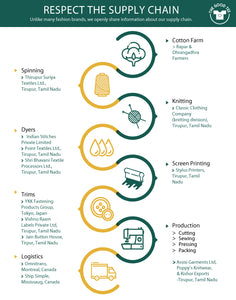#TheGoodTribe Interview with Pam Meier, Founder of The Turtle’s Back

Image by Hearst Publishing
Did you know that turtles are the oldest AND the most threatened group of animals in the world? Habitat loss, road mortality, predation, and human collection take part in threatening the turtle's species. You’ve probably heard the phrase save the turtles when it comes to minimizing our use of plastics, but wildlife rehabilitators are saving the turtles, literally!
Wildlife rehabilitation helps provide care for sick, injured, and/or orphaned animals so they can return to their natural habitat. Every animal has special needs making it difficult to care for multiple species so there are wildlife rehabilitation centers that focus on certain animals, such as the nonprofit organization, The Turtle’s Back.
The Turtle’s Back takes in over 100 turtles every year, mainly between May-July as this is their peak season. During this time, the turtles that are taken in can usually be released the same season but some require a year or more to fully recover, so hard work is put in all year round.
This week on #TheGoodBlog we got to talk with Pam Meier, the founder of The Turtle’s Back. Pam is a jack of all trades! While running The Turtle’s Back, she is also an educator as she offers educational programs, seminars and mentoring apprentices. She’s even developed a foil tape shell repair technique that’s been published in the National Wildlife Rehabilitators Association Journal. Check out this week’s must read to learn more about The Turtle’s Back and how even YOU can help and get involved if coming across an injured turtle!
1. Tell us about your journey and how The Turtle’s Back began.
I have always been equal parts artist and naturalist, and always involved with wildlife in one way or another. My first career was in graphic design, but when my children were young I began creating environmental education programs for kids; it became a second career. When I learned that our state sponsored a volunteer wildlife rehabilitation program, it seemed perfect for me—a way to legally and knowledgeably help native animals directly, rather than simply teaching others about them.


2. What inspired you to become a wildlife rehabilitator? Why did you choose to specialize in becoming a turtle rehabilitator?
As a solo rehabilitator, I had to choose which species to focus on. Unless you’re working for a nature center or staffed facility, it’s prohibitive to try to manage every type of animal; they all have very different requirements, schedules, housing needs, etc. I realized that if I was going to put so much of my time and resources into this, I wanted to choose a species that really needed the help. Turtles are one of the most endangered taxonomic groups on the planet and, locally, one of the least known and understood. We have eight species of resident turtles here in Connecticut, and five of them are listed species (on the state’s list of threatened, endangered or species of special concern). I don’t work with sea turtles which, as a migratory species, would require a federal rehabilitation permit. Turtles are the most amazing, ancient animals, and are able to survive things other animals cannot. Most vets have very little training in treating them, so it’s really down to turtle rehabbers to fill the gap. And there are very few of us!


3. I read that you’ve developed a new foil tape shell repair technique. Can you tell us what that is? How does it help in a turtle’s recovery?
Yes! It’s simply called the foil tape method, and requires only aluminum foil tape and super glue—materials readily available to everyone. It is quick and easy to apply, totally customizable, non-invasive and long-lasting. A turtle’s shell, or carapace, is made of bone covered with keratin. A shell fracture is essentially a broken bone. Though they take much longer than ours, turtle bones have remarkable healing ability; turtles can survive injuries most other animals never could. But they need to be treated quickly, while the injury is fresh. Unfortunately, most shell repair methods take a lot of time and are messy or invasive to apply, may require anesthesia, and may not stay in place long enough—all of which stress the animal and can compromise the healing process. As a result, veterinarians may euthanize a badly wounded animal rather than spend the time, effort and resources required to try to fix it, and rehabbers may avoid attempting shell repair altogether. The foil tape method gives everyone a fast, simple tool to help turtles that otherwise wouldn’t be given a chance, with minimal stress for the animals.


4. It probably differs a lot especially during peak seasons, but what is a typical day like working as a wildlife rehabilitator?
Turtle season is like a bell curve, with no activity in the winter when turtles brumate (hibernate), and constant activity in early summer when all the females are on the move, nesting en masse. The summer, for me, is basically like running a 24/7 ER single-handedly. Most of my life goes on hold. That’s true for most wildlife rehabilitators, whose season generally starts earlier in the spring, when most animal babies are born, and extends later into the fall or even all year, as mammals and birds are active all year. I get a winter respite, but things get really acute in early June, when I can easily intake 10 injured animals in a day. The phone rings constantly, both with calls about injured turtles and questions about how to handle turtle-related issues, like what to do about a turtle nesting in someone’s yard or how to get a snapping turtle off the road. In the early days of rehabbing I often had to go pick up the patients; now I’m fortunate to have a network of transporters—a HUGE help. But the amount of time spent simply communicating with people cannot be underestimated. The rest of the day—and often some of the night—is taken up with shell repair and other urgent care triage, and attending to the existing patients. Every day is like doing rounds in a hospital. Hand watering, a time-consuming method of keeping turtles hydrated, is necessary for most patients whose injuries mean they can’t be immersed in water for weeks. Water changes for those that are water-safe are constant. Every one has different needs in terms of medication and diet. And, needless to say, the cleaning is endless! I often get requests from people interested in volunteering, and usually scare them away when I explain how much cleaning is involved...
One of the other unique things about turtle rehab is the ability to hatch eggs. Since most injured animals tend to be nesting females, I end up with plenty of eggs that didn’t make it into a nest, and am able to incubate and hatch them. So late summer and early fall is usually consumed with hatchling care and both hatchling and adult patient releases. This is where I have to do it myself, so most days I am driving all over the state and trudging through brush and wetlands in search of the ideal release location for each animal. It is one of the most difficult but most gratifying parts of the job, returning these vulnerable animals—and the offspring of those who were lost—to their wild homes...it’s why I do it. It’s why we all do it.


5. Can you tell us about the educational programs, seminars and mentoring apprentices you offer?
As an environmental educator, teaching people about these animals is equally as important to me as treating the actual animals. Public awareness is critical to turtle survival. I offer programs on Connecticut’s native turtles to anyone who will have me, from scout groups, libraries and schools to senior centers, outdoor festivals and events. I’ve presented at car dealerships and feed stores, state parks and Rotary Clubs. And no matter who is in the audience, they are always amazed at how interesting turtles are and how little they realize they knew about them. And based on the enthusiastic responses I always get, I feel as though I’m deputizing a whole new group of turtle advocates with each presentation.I also have a commitment to empower other turtle rehabilitators, so I teach when I can. Two years ago I enlisted my mentor, Kathy Michell, a New York-based rehabilitator, to co-lead a full day turtle rehab seminar for other Connecticut rehabilitators, all of whom are permitted to treat turtles but few of whom have any training in how to do so. I have also presented my foil tape technique at state and national wildlife rehabilitation conferences. And I do take apprentices.


6. I saw that Turtle’s Back t-shirts are coming soon and that you’re using The Good Tee’s sustainable t-shirts! Why did you decide to go sustainable and Fairtrade.
That’s an easy question! Because, as an environmentalist who cares about the future of the planet we share with our fellow creatures, it is of the utmost importance to me to support trade which not only does no harm, but sustains us all. Organic cotton and economic justice are no-brainers for me; I choose to put my money where my mouth is, and to ask those that support me to do the same.

7. Your designs on the organic tshirts look super cute! How are the proceeds going to help the rehabilitation of Connecticut native turtles?
The Turtle’s Back is a non-profit organization that relies on donations to keep the lights on and the filters running. Wildlife rehabilitation is a volunteer commitment; food, medication, equipment, gas, electricity and the enormous time that goes into it are paid for or compensated entirely by fundraising. When you consider that every turtle requires its own habitat, food, heat, light (sometimes two kinds), filtration and usually medication, you can begin to imagine the out-of-pocket expenses involved. The shirts are also a great vehicle for spreading the word about The Turtle’s Back!

8. What would you like readers to know about turtle rehabilitation? Or just wildlife rehabilitation in general? What’s the best way to help if we were to see a wild turtle?
One of the most important things for people to know about turtles right now is that international trafficking of our native North American turtles has become a real crisis in the past few years. It’s critical that people learn to identify their local species and know which are protected, and that they remove all location data from any photos they share of turtles they find in the wild.
To locate a rehabilitator near you:
1. Google “wildlife rehabitator” with your state or province;
2. In the US, check with your state’s Department of Natural Resources/Department of Environmental Protection or go here
3. In Canada or Mexico, go to the International Wildlife Rehabilitation Council: here
When you see a turtle crossing the road:
1. Always stop and help it get across in the direction it’s headed; never relocate it or keep it as a pet! Turtles have homes, and their communities need them.
2. If it’s injured, do not leave it there! Take it with you, however you can, keep flies off of it (maggots can kill a turtle) and get it to an experienced turtle rehabilitator. They can take it to an appropriate veterinarian if necessary. If you leave it there it may well crawl away, even if mortally injured. Never assume that it’s too far gone to be saved or that the injury is too minor to be serious. All injured turtles need help. And turtles worldwide need help to survive!

As an eco-friendly brand, The Good Tee is honored to be chosen and part of The Turtle’s Back t-shirts! Want to help #SaveTheTurtles? Check out The Turtle’s Back website where you can donate or get one of their tees. Not only do they have their cutest logo on them, but all proceeds from the sale of t-shirts go toward the rehabilitation of Connecticut native turtles!
Want to learn more about saving turtles and support this good human? Check out The Turtle’s Back and their links below!







Leave a comment